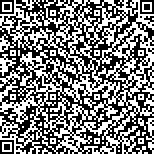曾明,马静梅,顾旭东,等.吞咽动作观察疗法对脑卒中患者吞咽功能和功能性磁共振成像的影响[J].中华物理医学与康复杂志,2021,43(2):116-121
扫码阅读全文

|
| 吞咽动作观察疗法对脑卒中患者吞咽功能和功能性磁共振成像的影响 |
|
| |
| DOI:10.3760/cma.j.issn.0254-1424.2021.02.003 |
| 中文关键词: 动作观察疗法 镜像神经元 脑卒中 吞咽功能障碍 功能性磁共振 |
| 英文关键词: Action observation treatment Mirror neurons Stroke Dysphagia Functional magnetic resonance imaging |
| 基金项目:浙江省自然科学基金(LQ19H170001);浙江省医药卫生科技项目(2019RC291);浙江省医药卫生科技计划平台计划项目(2019ZD020);浙江省基础公益研究计划(LGF19H170004) |
|
| 摘要点击次数: 5484 |
| 全文下载次数: 12072 |
| 中文摘要: |
| 目的 观察吞咽动作观察疗法对脑卒中后吞咽障碍患者吞咽功能和功能性磁共振成像的影响。 方法 将脑卒中后吞咽障碍患者18例按随机数字表法分为治疗组(9例)和对照组(9例)。治疗组在常规吞咽康复治疗的基础上,观看正常人吞咽动作视频,然后模仿吞咽动作,对照组则在常规吞咽康复治疗的基础上,观看相同时间的风景视频,每周5次,每次10 min,共治疗8周。分别于治疗前和治疗8周后(治疗后)采用进食评估问卷调查(EAT-10)、经口进食能力评估(FOIS)及渗透-误吸评估(PAS)。另采用fMRI对2组患者的吞咽动作视频刺激任务进行观察。 结果 治疗后,2组患者的EAT-10评分、PAS评级、PAS评级均优于组内治疗前(P<0.05),且治疗组治疗后的EAT-10评分、PAS评级、PAS评级分别为(18.44±3.71)分、(5.44±0.88)级、(2.44±1.01)级,均优于对照组治疗后(P<0.05)。治疗后,2组患者行fMRI检查时观看吞咽动作时,治疗组的大脑的楔前叶、顶叶、中央后回、BA7区、BA5区、额叶、中央旁小叶激活范围较组内治疗前和对照组治疗后均明显增大(P<0.05)。 结论 基于镜像神经元理论的吞咽动作观察疗法可改善脑卒中患者吞咽障碍,且可促进脑卒中吞咽困难患者吞咽功能相关的脑区激活。 |
| 英文摘要: |
| Objective To observe the effect of observing good swallowing on the swallowing action of stroke survivors with dysphagia. Methods Eighteen stroke survivors with dysphagia were randomly divided into a treatment group (n=9) and a control group (n=9). In addition to routine swallowing rehabilitation therapy, the treatment group was asked to simulate swallowing after watching a video of normal people′s swallowing action. They did so 5 times a week for 10 minutes, while the control group just watched landscape videos at the same time. The treatment lasted 8 weeks. Before and after the treatment, both groups were assessed using the eating assessment tool (EAT-10), the functional oral intake scale (FOIS) and the penetration and aspiration scale (PAS). Functional magnetic resonance imaging (fMRI) was also used to observe their swallowing action. Results There was no significant difference between the two groups in any of the measurements before the treatment. After the 8 weeks of treatment the average EAT-10, FOIS and PAS scores of the treatment group were all significantly better than before the treatment and better than the control group′s averages at the time. fMRI showed significantly more areas activated in the precuneus, parietal lobe, posterior central gyrus, BA7, BA5, frontal lobe and paracentral lobule in the treatment group compared with before the intervention and also more than in the control group. Conclusions Observing proper swallowing action can improve dysphagia and activation of the swallowing-related brain areas of stroke survivors. |
|
查看全文
查看/发表评论 下载PDF阅读器 |
| 关闭 |